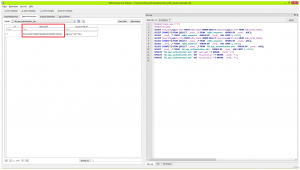DeviceID: Difference between revisions
CelesteBlue (talk | contribs) No edit summary |
CelesteBlue (talk | contribs) No edit summary |
||
| Line 10: | Line 10: | ||
This way, it's harder for people to know their openPSID. But since we have tm0: partition read access from 3.00 to 3.60, we can just read 0x10 Bytes at offset 0x850 of tm0:npdrm/act.dat to get openPSID. | This way, it's harder for people to know their openPSID. But since we have tm0: partition read access from 3.00 to 3.60, we can just read 0x10 Bytes at offset 0x850 of tm0:npdrm/act.dat to get openPSID. | ||
[[ | [[http://www.psdevwiki.com/ps3/images/d/db/OpenPSID-to-DID.png|200px|thumb|left|screenshot cannot be displayed]] | ||
Revision as of 00:58, 25 February 2018
Description
It is a unique 20 bytes (0x14) hexsequence inside your PSVita / PSTV. It is simply the SHA1 hash of openPSID. It is stored inside several files such as id.dat or calendar.db in order to check that the inserted memory card was not previously in another PSVita, else a database refresh is performed.
Why did SONY not simply used openPSID ? On PSP, OpenPSID was almost never used except for savedata. On PS3, OpenPSID was used for act.dat checks, savedata / trophies when no PSN account bounded. On PSVita, OpenPSID is used the same way as on PS3 but SONY secured still more its console by using the hash of OpenPSID and not OpenPSID itself. This way, it's harder for people to know their openPSID. But since we have tm0: partition read access from 3.00 to 3.60, we can just read 0x10 Bytes at offset 0x850 of tm0:npdrm/act.dat to get openPSID.
Location of the files where it is stored
ux0:id.dat ux0:calendar/calendar.db
| File | Value | Info |
|---|---|---|
| id.dat | DID=297C4C0FA1F5A6E374FE4FE65535E03DC1643F2C | |
| calendar.db | tbl_app_authentication_info >> column open_psid >> 297C4C0FA1F5A6E374FE4FE65535E03DC1643F2C | The value of the Hexsequence is stored as a Text value |
Structure
| Name | length | Example |
|---|---|---|
| DID | 20 bytes (0x14) | 297C4C0FA1F5A6E374FE4FE65535E03DC1643F2C |
